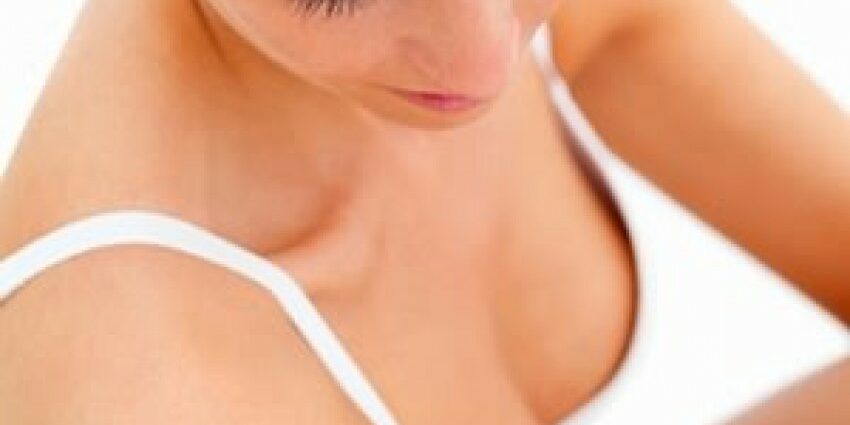Did you know that there is more iodine stored in the female breast tissue than there is in the thyroid? Research suggests the reason may be that iodine, which is rare, is essential for brain development in infancy. Storing iodine in the breast may have been an evolutionary safeguard to ensure the delivery of iodine to the infant through breast milk, thus securing the proper brain development of the newborn.
Today, studies are showing that adequate amounts of iodine are essential for breast health, whether a woman plans on breastfeeding or not. Lack of iodine may increase the risk of breast cancer and fibrocystic breast—not to mention the links to obesity, cognitive function, heart and mental health.
Unfortunately, iodine deficiency is a common issue today. Up to 74% of healthy adults may not get adequate amounts of iodine (1).
New Findings Link Iodine to Breast Health
Current research suggests that iodine supports breast health in more ways than one:
Iodine has been shown to exert a powerful anti-oxidant effect on the breast tissue equal to that of Vitamin C (3). When the breast tissue is deficient in iodine, there may be an increase in lipid peroxidation (cell damage), one of the first indicators of breast cancer risk (4).
Low iodine levels have been shown to increase the amount of circulating estrogens in the breast. Consequently, iodine-deficient breast tissue has shown an increase of estrogen receptor proteins, making iodine –deficient breasts a target for toxic estrogens and thereby increasing the risk of breast cancer.
Stress is also a big contributor to the health of the breasts and thyroid. Excess levels of cortisol—a stress hormone—have been linked to a weakened immune system and breast cancer. Iodine helps regulate cortisol levels.
In animal studies, iodine was shown to decrease breast tumors by 2.5 times. Breast tumors were also shown to uptake iodine and thus reduce tumor growth, likely because of the free-radical-scavenging property of iodine.
At a dose of 3-6mgs per day, iodine was shown to reduce the symptoms of fibrocystic breast disease by 65% as assessed subjectively by the patients and their doctors.
The Japanese Contrast
Because of the high availability of iodine-rich sea vegetables, the traditional Japanese diet is naturally rich in iodine. In fact, consumption of iodine in Japan is 25 times the amount of western consumption. The Dietary Reference Intake (DRI) for iodine in the US is 150mcg per day, 15% of one mg. By contrast, the average Japanese consumption of iodine is 6-13mgs per day, significantly more than we consume in the west. Interestingly, American women experience three times as much breast cancer as do Japanese women.
There may be two major reasons why iodine has become so deficient in the west. Firstly, there has been a significant reduction of salt intake. While iodine is not a natural component of sea salt, it has been added to salt beginning in 1924 to combat an iodine-deficiency epidemic that was causing goiters and thyroid disease country-wide, especially in the land-locked areas of the country. This was extremely effective and has been a major source of iodine in America since. However, refined salt has been linked to an increased risk of cardiovascular disease, and many health-conscious folks have cut this iodized product out of their diet, opting for sea salt instead.
A second major source of iodine since the 1960’s has been commercial breads—in 1960 iodine was added to bread as a dough conditioner. One slice of bread offered 150mcg of iodine, 100% of the DRI (then called the Recommended Daily Allowance or RDA). In 1980 the iodine was replaced with bromine, which competes with iodine receptors. As a result of these two factors, iodine levels have plummeted by more than 50% in the last 30 years.
The Ayurvedic Perspective
In Ayurvedic medicine, iodine is considered to be a natural antiseptic for the blood, warding off infection. It was in fact considered the antibiotic of the 1800s. Because of its role in normalizing metabolism via the thyroid, it was used to support balanced weight, mood, and cardiovascular function.
According to Ayurveda, iodine is also a bile thinner and lymph mover. Poor bile flow compromises the natural detoxification pathways as well as the utilization of the good essential fatty acids. As a lymph mover, iodine supports cellular metabolism, and helps the body drain waste and toxins that may accumulate in between cells. These accumulated toxins may be a major contributing factor to histamine (allergic) reactions to pollens, pollutants, and hard-to-digest foods like wheat and dairy.
Because much of the breast tissue is drained by the lymphatic system, it is important for breast health that the body’s lymphatic flow be optimal. Breast swelling or tenderness around menstruation, as well as fibrocystic breast issues, may be related to sluggish lymphatic drainage.
Where to Get Iodine Today?
There are plenty of reasons not to go back to iodized table salt and enriched commercial bread, so where does one get iodine today?
Unfortunately, iodine is not available in sufficient quantities in most foods. Sea vegetables—especially kombu (also called kelp) may be the most reliable dietary source.
Experts agree that it is safe to supplement with 3-6mgs, or 3000-6000mcg of iodine per day to help protect against breast cancer and support optimal breast health.
Experts also believe that an effective iodine supplement should contain both iodine and iodide. Iodine is concentrated in different forms by different tissues of the body. The thyroid and skin concentrate the iodide form and the breast and prostrate concentrate the iodine form. If you choose to supplement, look for a product with both iodine and iodide.
The area of breast health is one more addition to the well-documented benefits of iodine. Whether you choose to supplement, or to make sea vegetables a mainstay in your diet, make sure you are getting enough of this rare, essential mineral.
Contributed by Dr. John Douillard
(You can purchase a great Iodine supplement recommended by Dr, John at his online store for 20% off now)



